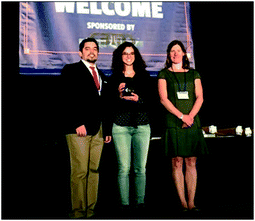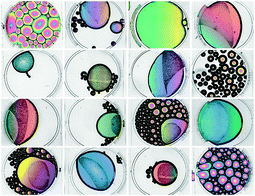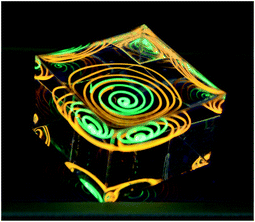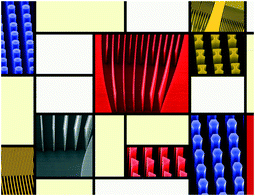The art in science of MicroTAS: 10 years of miniaturized art
Darwin R.
Reyes†
National Institute of Standards and Technology (NIST), Gaithersburg, MD, USA. E-mail: darwin.reyes@nist.gov
The criteria established for this year's selection was consensus between the judges of which were the top three images based on their visual appeal, scientific merit, originality and suitability for becoming the front cover of a Lab on a Chip issue. After choosing the three top images the winner was also decided by consensus. The two runners-up of the 2017 MicroTAS Art in Science competition were:
1st runner up – Reflections by Dorothea Helmer of Karlsruhe Institute of Technology (KIT), Germany (Fig. 3).
2nd runner up – Mondrian's Micropillars by Eloise Pariset of CEA-LETI, France (Fig. 4).
Since the inception of the Art in Science competition at the MicroTAS conference in 2008 there has been an overwhelming interest in this community to showcase excellent examples of microfluidic-inspired art in the form of amazingly stunning images. To honor the first 10 years of the MicroTAS Art in Science competition we present here the first 9 images that won the competition from 2008 to 2016 (Fig. 5).
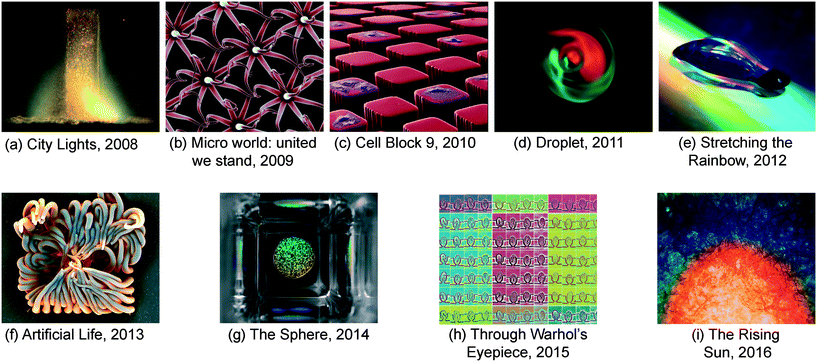 | ||
| Fig. 5 MicroTAS Art in Science competition winners from 2008 to 2016. (a) DOI: 10.1039/B821774M, (b) DOI: 10.1039/C002965N, (c) DOI: 10.1039/C1LC90007B, (d) DOI: 10.1039/C2LC90034C, (e) DOI: 10.1039/C3LC90026F, (f) DOI: 10.1039/C4LC90017K, (g) DOI: 10.1039/C5LC90049B, (h) DOI: 10.1039/C6LC90029A, (i) DOI: 10.1039/C7LC90030A. | ||
Acknowledgements
The Art in Science competition is sponsored and supported by MicroTAS, the Chemical and Biological Microsystems Society (CBMS), the Lab on a Chip journal, and NIST. The 2017 award consisted of a monetary prize ($2,500), an award certificate, and a coveted front cover of the Lab on a Chip journal. Please, check the MicroTAS 2018 conference website for further details regarding the slight changes to the competition format and image submission deadline for the next MicroTAS Conference in Kaohsiung, Taiwan.References
- M. C. Letizia, M. Cornaglia, R. Trouillon and M. A. M. Gijs, Single-Animal-Based Drug Testug and High-Content Screening is Enabled on C. Elegans by an Automated Microfluidic Platform, MicroTAS 2017, pp. 1092–1093 Search PubMed.
Footnote |
| † Any opinions or views expressed in this article are entirely those of the author and do not represent the views of the journal, Lab on a Chip, or the Royal Society of Chemistry. |
| This journal is © The Royal Society of Chemistry 2018 |

